| Johann Frederich Heinrich, son of Gottlieb and Anna Elisabeth (née Hirt) Baensch, was born in 1851. In 1880 he married Johanna Mary Agnes (Mary) Leibhardt. Their children were: Robert Benjamin "Ben" — born on 25 February 1881 at Donald, married Agnes Mary Walsh in 1907, died on 2 August 1946 aged 65 at South Melbourne, buried in the Roman Catholic section of the Melbourne General Cemetery Mary Esther Ada — born in 1882 at Mount Moriac, married Henry Wallace Palmer in 1906, died on 17 May 1927 at Malvern, buried at Cheltenham Pioneer Cemetery Frederick Reynold — born in 1884 at Mount Moriac, married Irene Catherine Harding in 1917, died in 1946 at South Melbourne, buried at Box Hill Cemetery Matilda Amelia — born in 1887 at Geelong John Albert — born in 1889 at Geelong, married Lillian May Green in 1921, died on 7 July 1928 at Box Hill, cremated at Springvale Botanical Cemetery John Oscar — born in 1890 at Geelong, married Myrtle Pascoe Gordon in 1919, died on 27 November 1949 at Ararat Mary Teresa Agnes — born on 2 September 1891 at Grovedale, married Alexander Tweeddale in 1921, died on 7 August 1963 at Ballarat, buried at Ballarat New Cemetery Lewis Alwin — born (Louis) in 1895 at Geelong, died on 17 July 1945 aged 50 years at Richmond, buried at Cheltenham Memorial Cemetery Rosina Ethel — born in 1897 at Geelong, married Alfred John Green in 1926, died 22 July 1949, buried at the Cheltenham Memorial Cemetery Frederick was a South Barwon councillor from 1888 to 1895. He bought the Germantown Hotel with an attached store on 17 August 1886 for £825 at an auction conducted to sell the property of the estate of Albert Benari, the first licensee. In November 1886 the first of a series of monthly sales of livestock were held at the hotel. He ran the hotel until his death on 14 June 1903. The hotel stock after his death consisted of 2 18 gallon casks of ale, 1 gallon of wine, 2 bottles of whiskey, 1 bottle of brandy, 1 bottle of gin, 1 bottle of schnapps and 2 dozen bottles of lemonade. It was valued at £3/12/-. He owned the hotel and land on allotment 25 of section 2 and also four allotments further north totalling 46 acres 3 roods and 39 perches. His total liabilities exceeded his assets. The 46 acres had been unsuccessfully auctioned in 4 lots on 11 May 1898. Mary retained ownership of the hotel until it was auctioned by the mortgagee. On 25 April 1907 the land and hotel were once again auctioned. The following July the license was transferred to Nora Rilon who held it until about 1913. | 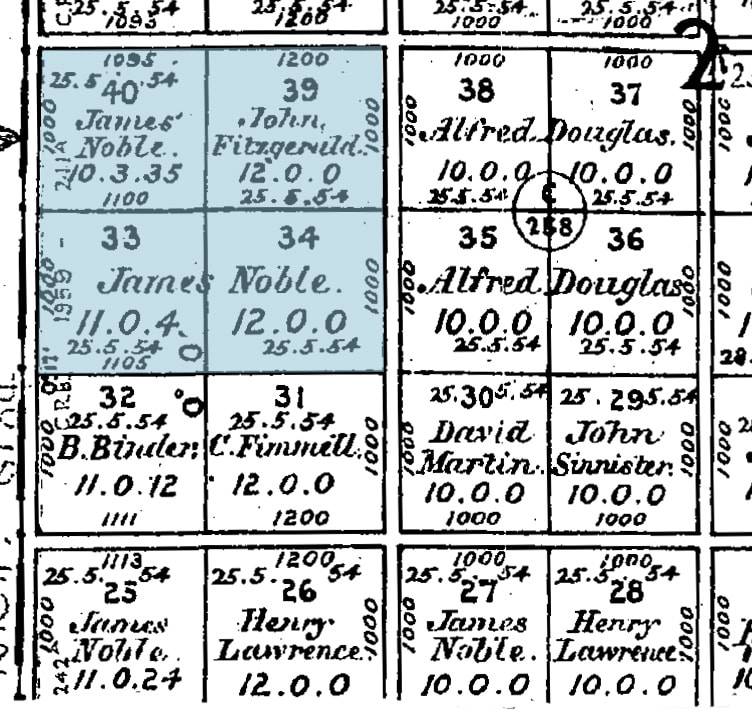 When Frederich Baensch died he still owned allotments 33, 34, 39 and 40 in section 2 in the Parish of Connewarre. This land stretches from Torquay Road to Bailey Street and is south of Marshalltown Road. He also owned one acre on the north west corner of allotment 25 on which the Germantown Hotel was built. |
|
0 Comments
The first meeting of the Grovedale Progress Association, convened by Mr C Kleiss, was held at 56 Karnn Street (now called Highfield Drive), Grovedale on 12 March 1965 at 8pm. It was decided that future meetings would be held quarterly in the public hall.
The first office bearers were: President — Mr C Kleiss Vice president — Mr Fletcher Secretary — Mr Wise Treasurer — Mr Bayley Committee — Mr Woods, Mrs Pickup, Mrs Ball, Mrs Ryan, Mr G Taylor and Mr J Croft Topics discussed at early meetings were: Mail delivery (130 houses required within ¾ mile of the post office) — this was achieved in the first year Newspaper delivery — this was achieved in the first year School crossing Forming of roads including the old section of Heyers Road between Torquay and Bieske Roads Tree planting Footpaths Drainage Telephone booth Speed Limits Burning off vacant allotments Development of recreational centres Bus service including a school bus Street lighting Replacement of old unreadable signs Change street names that are similar — suggestions for Karnn Street were Highfield Drive, Oak Avenue, Caringal Road and Timber Top Avenue. A fee of 10/- per household was be charged to cover membership. Miss L Sheridan from TM Burke attended some meetings to answer resident's queries. A ball was run to celebrate New Year's Eve 1965 as a joint venture with the hall committee, charging 6/- admission. This project lost money. Mail delivery started in 1966. Deliveries were made in a car by Mrs Bent. Miss Sheridan approached Mr Horniblow, the editor of the Belmont and Highton News to include the name of Grovedale in the name of the paper. It was noted that requests to the council usually received the reply, "The riding members are investigating". It was decided to send a copy of their next request to Mr Horniblow to include in the Belmont and Highton News. A request was sent to the council complaining about children walking to school on the roads because no footpaths are provided. Access through Smith Street was quite impassable for small children as the street was more like a bullock track. This was a time when mothers usually did not take children to school. The progress association did not support the building of a swimming pool in Belmont or Highton by the council while more urgent work was required. In 1969 discussions about the Freeway began. Councillors Roberts and Dean visited to discuss this and other subjects. They were asked why residents were being refused permits to install septic tanks and how long it would take to have the sewerage connected to Grovedale. Being told probably 2 years the association decided to inquire about sewerage trust plans for the area. Residents also wanted to know how to dispose of grease trap refuse. At the next meeting they were told of a service operated by Mr Jennings of Barwon Heads. The councillors were asked if the council would assist in getting the Belmont buses to go to Heyers Road. The council was asked to allocate street numbers for all residents in Grovedale. During this year it was decided to hold monthly meetings. There was rapid growth at Grovedale around 1970. The membership of the progress association grew from 38 to 53. The new kindergarten and baby health centre was built west of the shops in Heyers Road. The progress association took a strong interest in the proposed freeway which had two planned options — the Waurn Ponds Creek area or south of the railway line. The progress association were keen to have the first choice as it would cut journey times for Grovedale motorists. The plans were being drawn up for the duplication of Torquay Road to the railway line. When Fred Rossack gave a talk on the history of Grovedale 200 people attended. A collection brought in $120 to be used to establish a tree studded walk through the recreation reserve. This was to be in memory of the pioneers of the district and to be called "Pioneer Avenue". On 25 March 1970 a meeting was held to form a Grovedale tennis club. Topics discussed at meetings in the early 1970s were: Sewerage Freeway location Land for recreation (to the north or south of Grovedale) Bus service Street numbering Street signs not being erected prior to house construction Odour from the feed lot (especially when the wind was from the south-east) The airport Direction signs Tennis club Gravelling of Smith Street and Green Lane Crossover ramp at kindergarten Nuisance dogs Reconstruction of the Bailey Street bridge Hotel entrance Screening of properties Phone boxes Mail boxes at the post office (12 applicants required) Although the rate of development in the early 1970s was increasing the membership of the progress association continued to drop during this period until only 18 financial members remained in the 1973-74 year. The November meeting was cancelled due to insufficient attendees to form a quorum. A membership drive was instigated the following February and although a couple of new members joined the remainder of the year was still disappointing. The greatest achievement for the 1973-4 year was the acquisition of a block of land in Bieske Road from GWST (now Barwon Water) to use for recreational purposes. It was hoped that this land could be used as an adventure playground. The progress association moved a motion in February 1975 to name this playground the "John Croft Recreation Reserve" after their former president and South Barwon councillor. A road running south westerly from the Grovedale Hotel to Felix Street was to be closed as it would cause traffic problems if it were to remain. The council proposed selling the land to adjoining landholders. The progress association objected to selling the land and wanted it kept for future recreational purposes. A New Grovedale Primary School Action Group was set up to push for a new school west of Burdoo Drive. This school opened on 4 February 1975. It had 10 classrooms, a library and an arts and crafts room. It looked probable that portable classrooms would need to be installed in the near future. The action group sent a letter of condemnation to the Victorian Education Department in protest. A new kindergarten began operation in the Lutheran hall in March 1975. On 27 November 1975 a meeting was held at Memorial Hall for the purpose of forming an action group for a secondary school in Grovedale. On 12 June 1975 a meeting was held at Memorial Hall to discuss the report prepared for the Cities Commission by Messrs Loder and Bayly. The areas of objection to the report were:
Late in 1975 the council decided to shift the fire station from Bieske Road to a block (60 feet x 150 feet) in Reserve Road west of Hoses Lane. The building would be brick as required by the City of South Barwon. The progress association was approved as the Hall Advisory Committee. The first meeting of this committee was held on 5 December 1975 to decide on the renovations needed for the hall. In 1976 extensive changes had been made to the feedlot in Barwarre Road because of the introduction of new regulations and "because of these changes the unsavoury odours from the feed lot should not occur again". The "Grovedale Grapevine", a newsletter containing community contacts and reports was distributed. Items mentioned were new youth groups held on Friday nights at the Baptist and Lutheran churches, a meeting to establish an Apex group and a soap box derby in Burdoo Drive. The South Barwon Council recommended to replace the defunct bridge in Bailey Street with a footbridge. A celebration was planned to mark the 50th anniversary of the supply of electric power to Grovedale in 1977. A working bee to be held to work on the restoration of the waggons donated for use in the John Croft Reserve and the Recreation Reserve was planned for January. A Christmas celebration was planned for Santa to tour Grovedale by fire engine terminating at Burdoo Reserve where balloons and sweets would be distributed to the children and would follow with carol singing. The Regional Director of Education would be contacted to enquire about a third primary school in Grovedale. Sub committees were set up for: Hall — to make recommendations for the purchase of equipment and to arrange repairs and maintenance. Grapevine — to produce the newsletter. Fun — to make recommendations for and to arrange school and communitty activities. Christmas treat — to make recommendations and to organise community Christmas celebrations. Permission was given to the CWA to place their honour board in the hall. The Pied Piper Playgroup which met in the Methodist hall requested help to get a council subsidy to offset the increase in rent being charged. An advertisement was placed in the Geelong Advertiser to announce a special meeting to be held on 7 September 1983 at 10:30 am at the Grovedale Neighbourhood Centre to finalise dissolution of the association. As there were no objections to this process, the association was formally dissolved. A cheque for the remaining $47.28 held by the association was sent to the Grovedale Senior Citizens Association. Compiled from minutes of the association
The Dee family of Germantown & Thompsons Ck (now Grovedale & Freshwater Ck)
June is a descendant of two of the early families settling in Grovedale — the Hartwichs and the Winters. She is also a descendant of the Burvilles and Radfords that settled in Mount Duneed. She has a great story to tell about the evolution of the community and the effects of World War 1 on a settlement once called Germantown. Through marriage her family tree extends to a wide number of names that are well known to history buffs in the area. Anyone is welcome to attend this meeting and stay for a cuppa afterwards. James Palmer was born about 1856. He married Eva, daughter of Frederick and Evangaline Withers, and had the following children:
Henry Wallace — born about 1884 at Port Augusta SA, died 1972 at North Geelong Elsie May — born 1885 at Richmond Minnie — born 1887, died 1888 at Newtown Albert Roy — born 1889 Arthur Stanley (Stan) — born 1890 at Geelong, husband of Dorothy Irene (Dot) née Twitt, killed in action in France on 25 January 1917 (one daughter Dorothy (Bonnie) Jean born 1915 at Geelong) James Reginald (Reg) — born 1893 at Geelong West, died 1977 at Coburg Horace Leslie — born 1895 at Geelong, died 1978 at Ferntree Gully Ivy Myrtle (Myrtle) — born 1898 at Geelong Norman Clifford — born 1901 in Geelong James died on 1 February 1922 at the age of 66 at his residence at Grovedale and was buried in the Church of England section of the Geelong Eastern Cemetery. Eva died in September 1929 at St Kilda at the age of 72 and was buried with him.
The VFL consisted of six teams (Geelong, Richmond, South Melbourne, Carlton, Collingwood and Fitzroy) each playing the other three times. Teams had 18 players and no reserves. Collingwood were premiers and the leading goalkicker was Dick Lee of Collingwood. Richmond took the "wooden spoon". Players were amateurs with players paying their own expenses. Geelong donated profits to war funds.
100 years ago — a few items from newspapers and cemetery records: King George V was monarch, Billy Hughes was prime minister, Gough Whitlam, 21st prime minister of Australia was born and three year old Sasanof won the Melbourne Cup. The first plebiscite on the issue of military conscription was held; it was defeated. 25 April was officially named and widely observed as Anzac Day. The Victorian Football League was feeling the strain of World War 1. Attendances were affected, only four clubs competed (Carlton, Collingwood, Fitzroy and Richmond) and teams were missing players. Geelong among many other teams, refused to play on "patriotic grounds". Fitzroy won the wooden spoon and the premiership in the same year, finishing fourth out of four and also winning the grand final. Melbourne receives its highest annual rainfall. 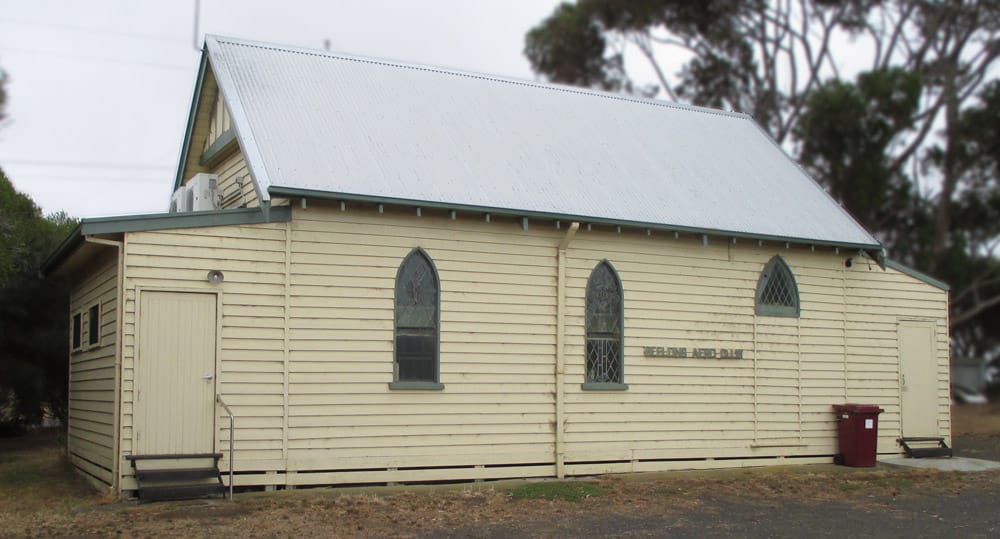 The old Connewarre Presbyterian Church, at 1411 Barwon Heads Road, Connewarre is now used by the Geelong Aero Club. It has skillion roofed extentions at the front and back and a doorway near the rear of the body of the church which has been closed off. Originally the door probably looked like the one at St Cuthbert's Church of England at Marshall which was built 5 years earlier and in a similar style. 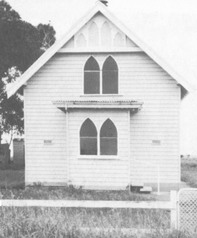 The Church before the entry at the front was altered The Church before the entry at the front was altered Connewarre Presbyterian Church was erected in 1916 on a block given by Mr D Polley on the corner of Staceys (then Lake) and Barwon Heads Roads, as it was decided that the old building was beyond repair. The architects, Laird & Buchan called for tenders in May and the successful applicant was Mr H Rose. The church was weatherboard on the outside with Californian redwood and beaverwood on the interior built in the Federation Carpenter Gothic style. It had a gable roof with skillion-roofed extentions each end and leadlight windows in the gothic style. The pulpit for the church had come from St Andrew's in Geelong. It would seat 100 people. The church was crowded for two services held on 8 October to commemorate the opening of the church. At the morning service Mr RC Blyth, chairman of the Board of Management, gave a short address, then handed a silver key to Mr R Fuller sen., the oldest church member, who opened the church. The celebrations continued the following Tuesday with a tea meeting and concert. There was a large attendance and the sum of £22 was obtained. The total expenses of building the church amounted to £350 of which over £200 had been paid off. In 1977 the church became the Connewarre Uniting Church, and about a year later it closed and was sold to the Geelong Aero Club.
|
SponsorsLinksThe Bluestone Cottage at Marshall
Together They Served Torquay Museum Without Walls Barwon Blog Geelong and District Database Geelong Cemetery Index Australian War Memorial Trove Public Records Surf Coast Early Schools Victorian Places Barwon Heads History |
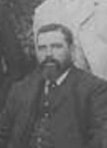
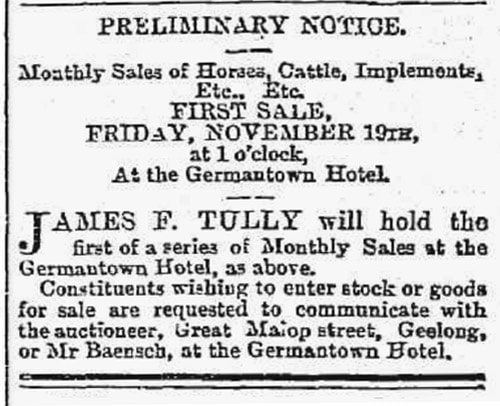
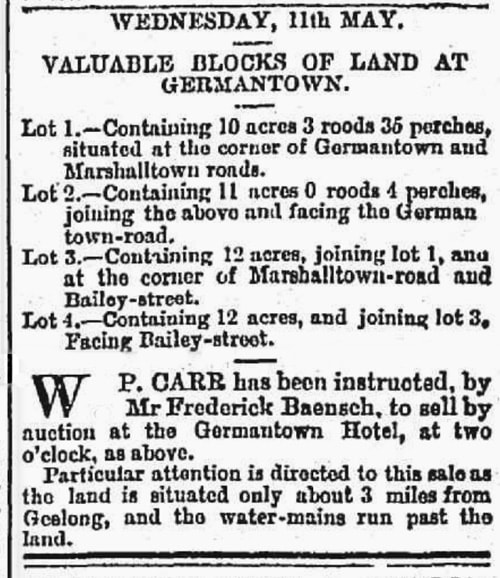
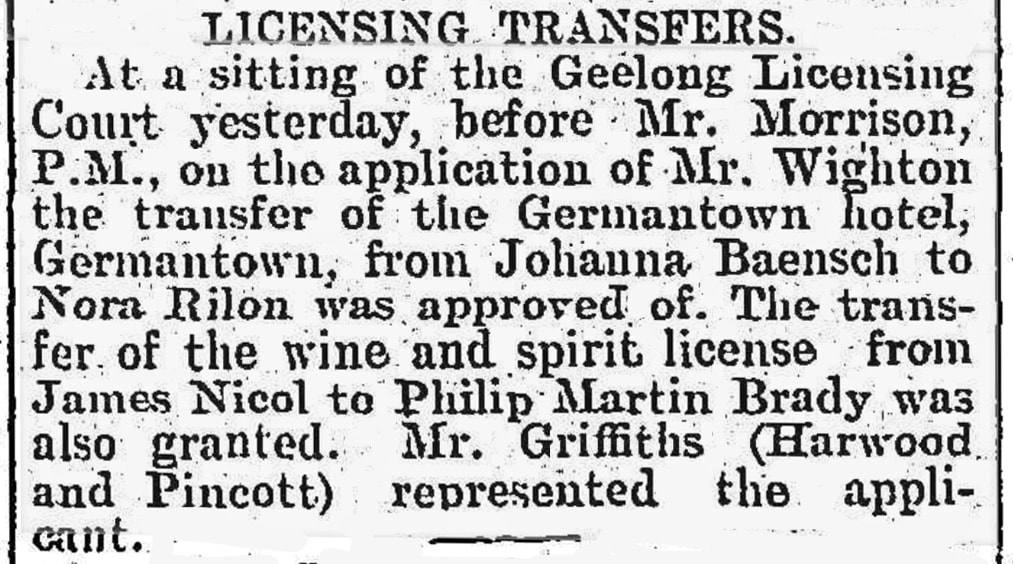
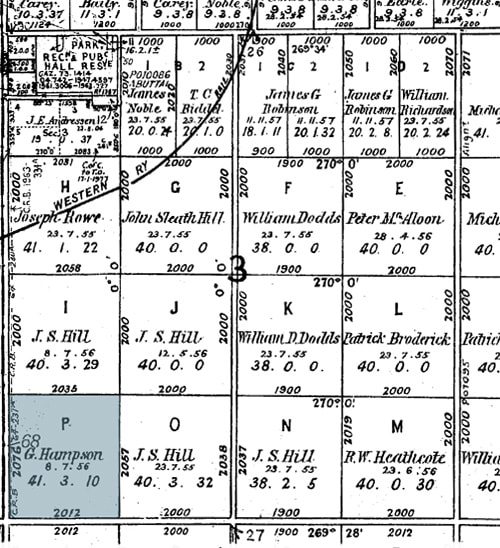
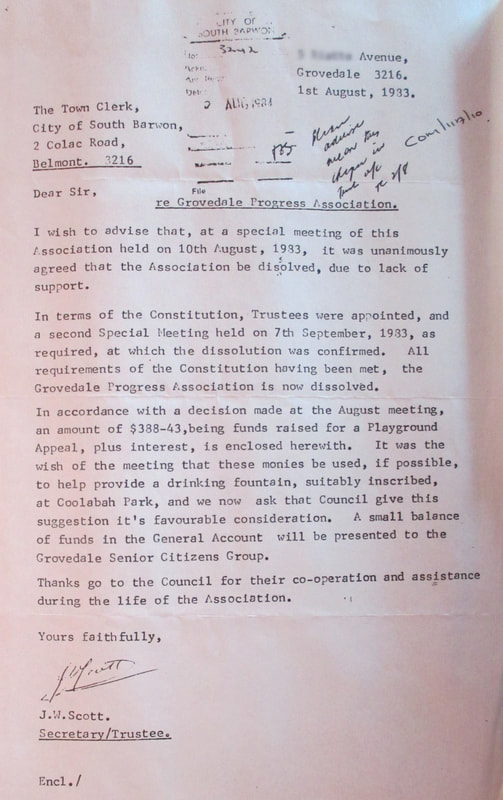
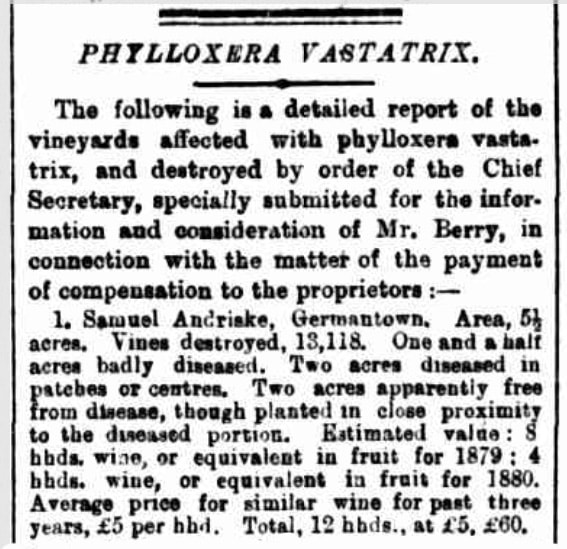
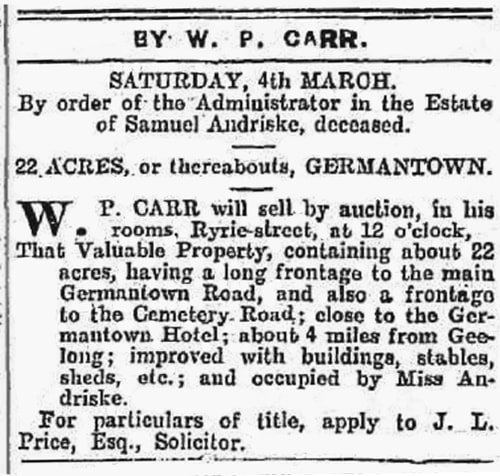
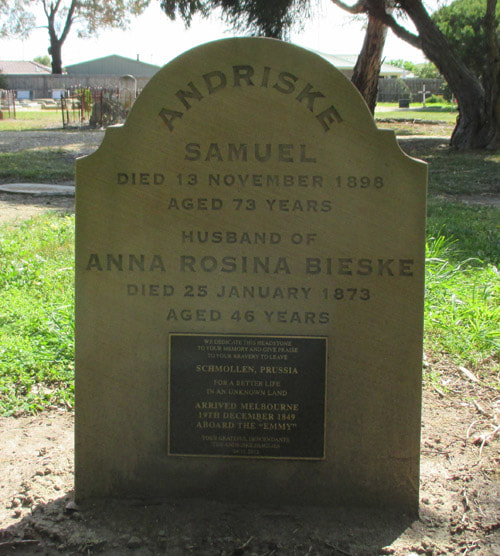
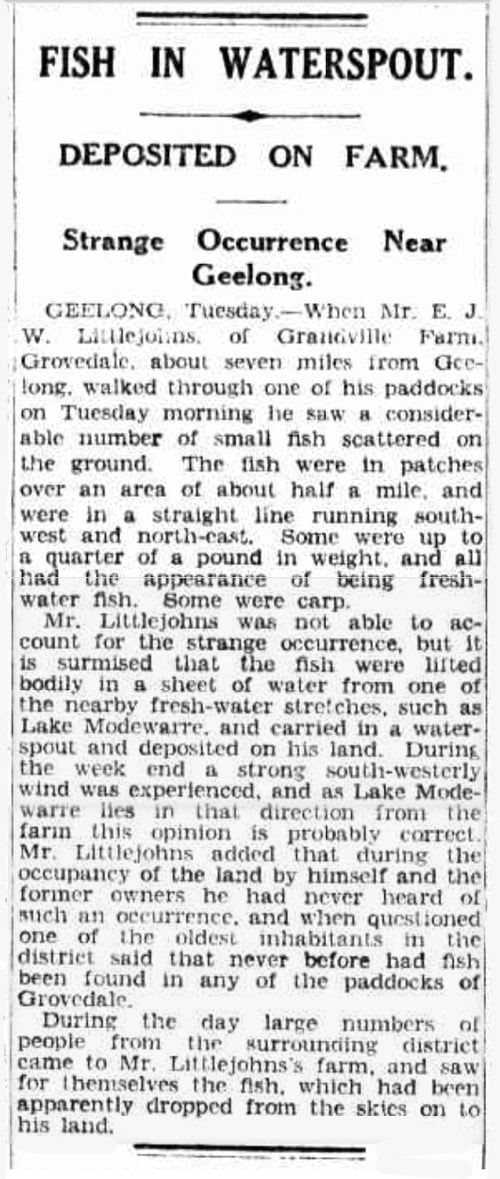
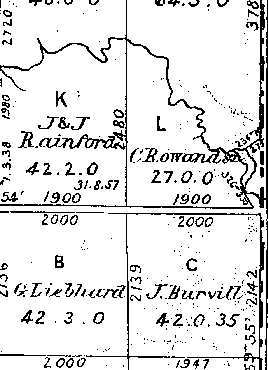
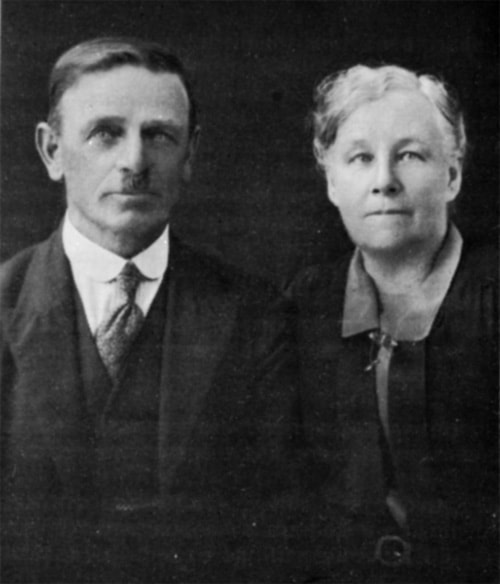
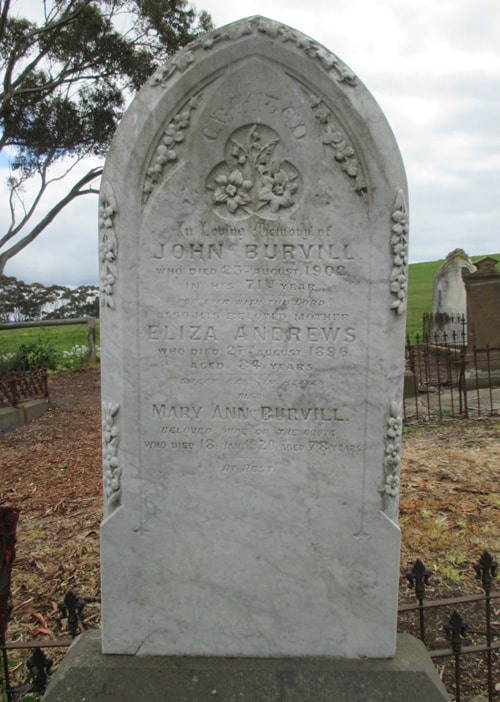

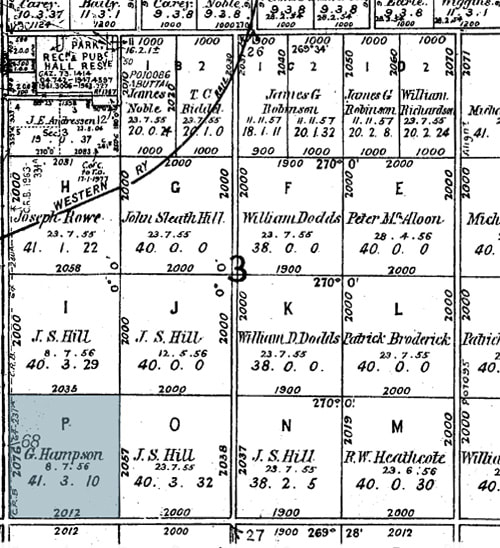
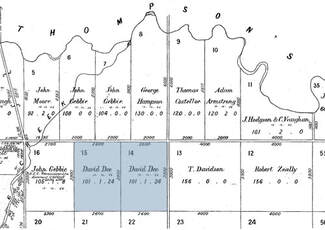
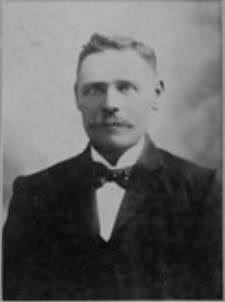
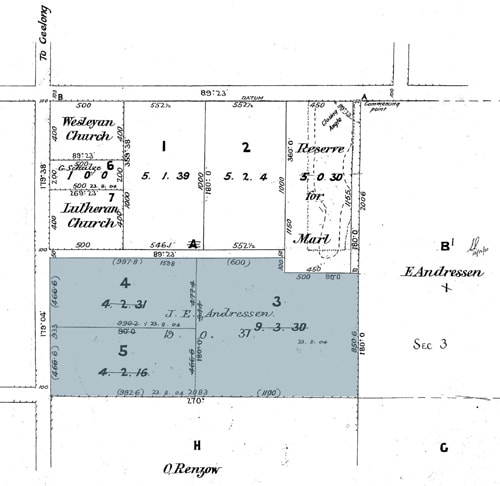
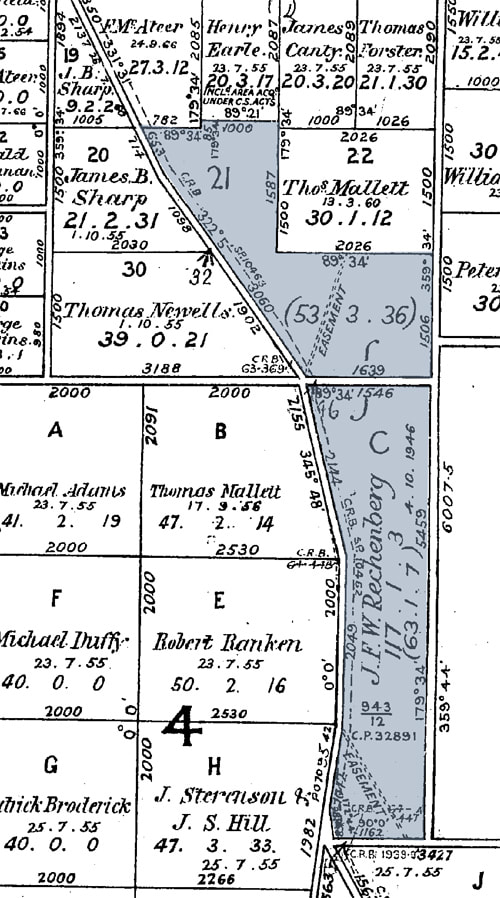
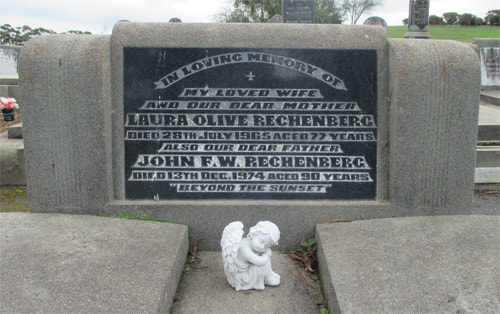
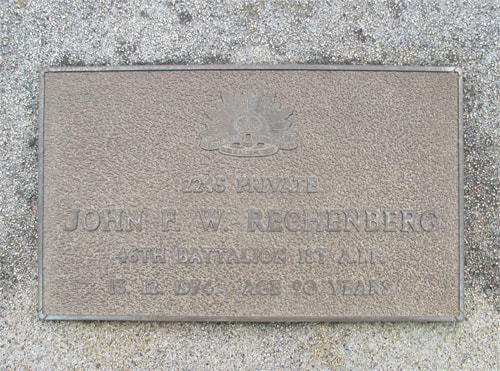
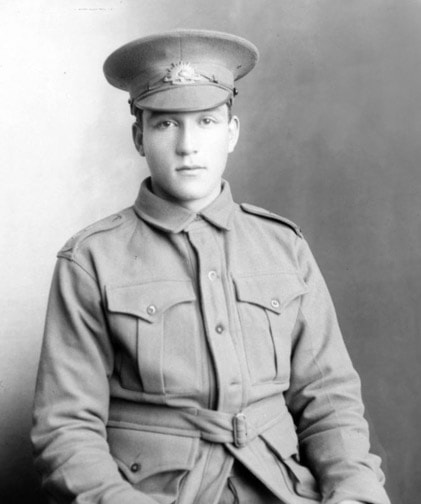
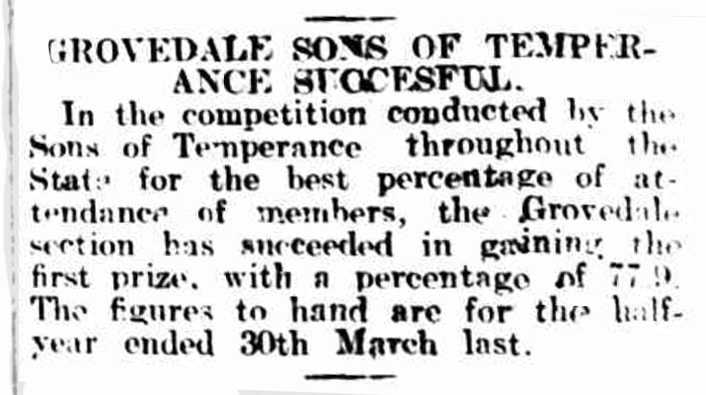

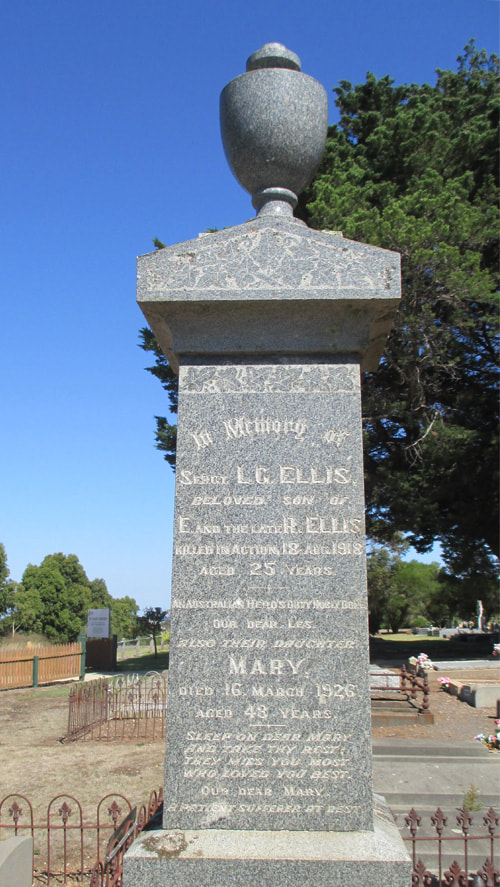
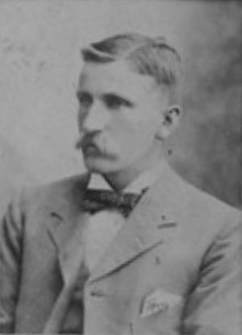

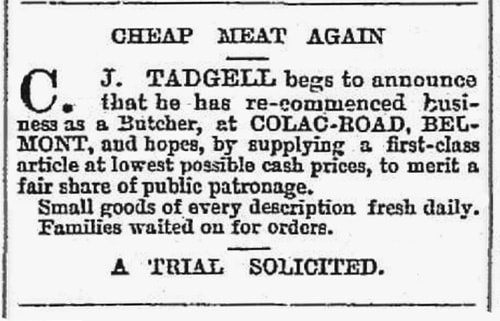
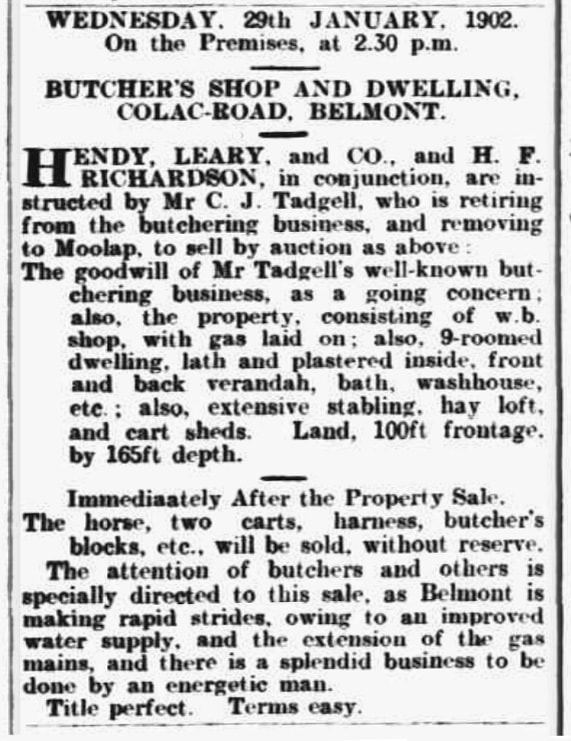

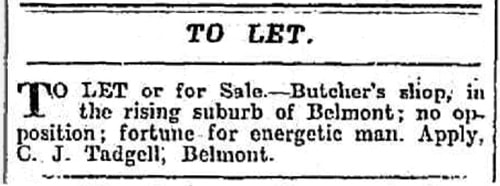
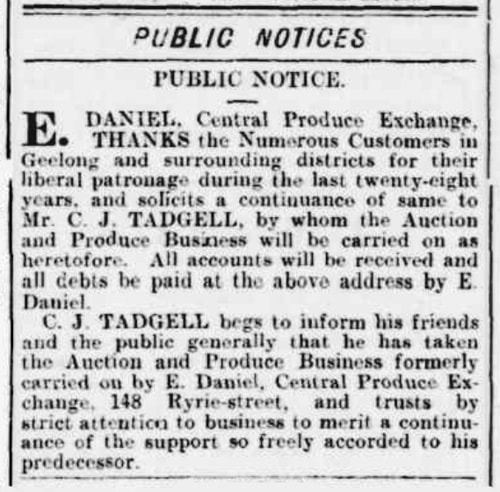
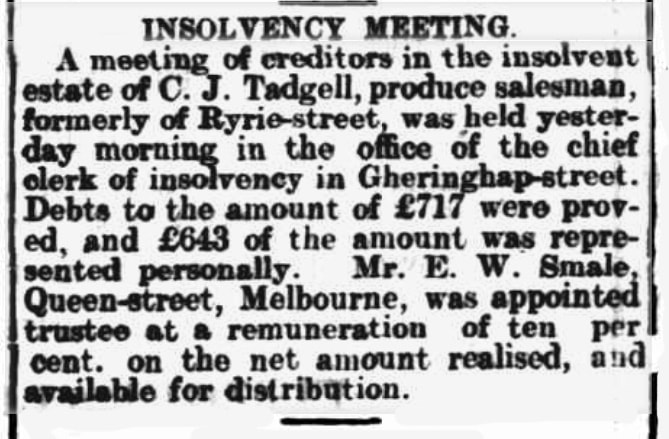
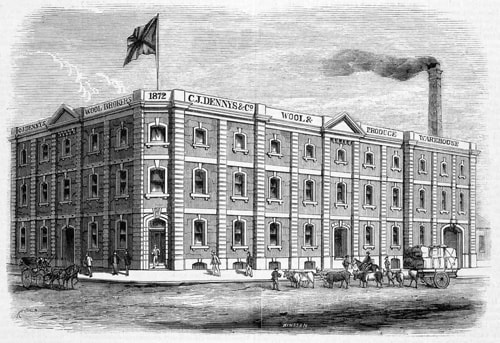
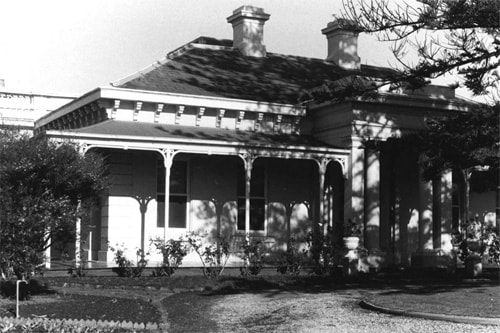
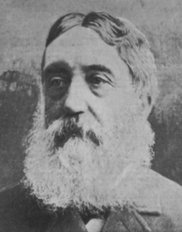
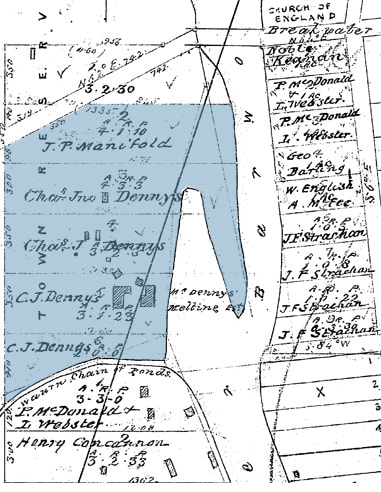
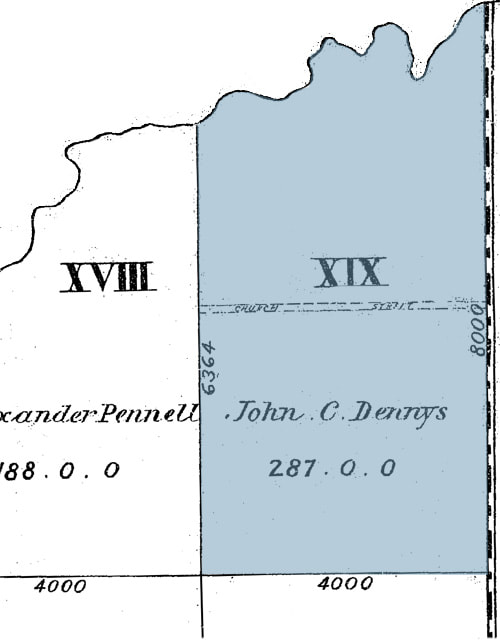
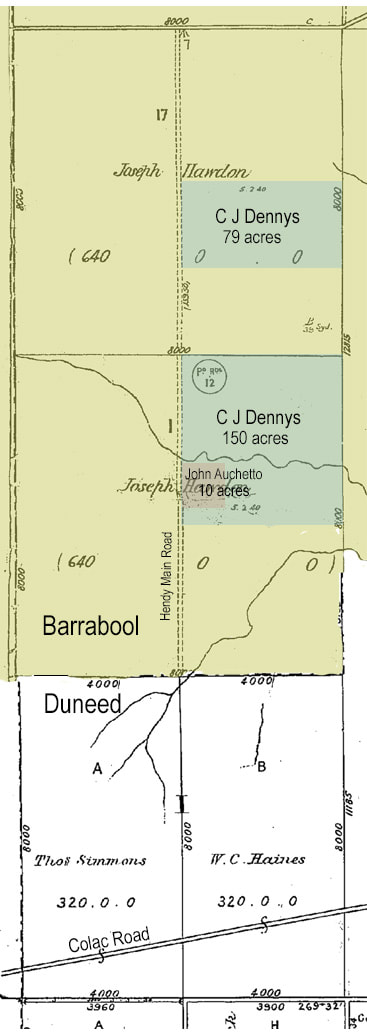
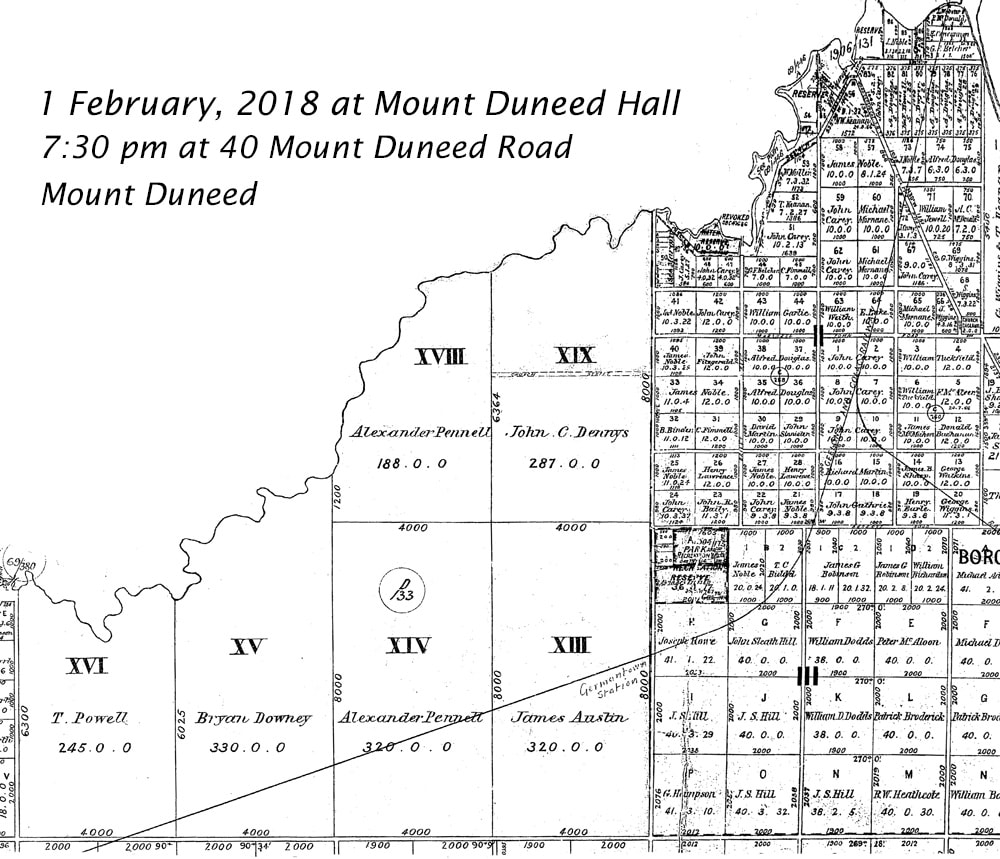
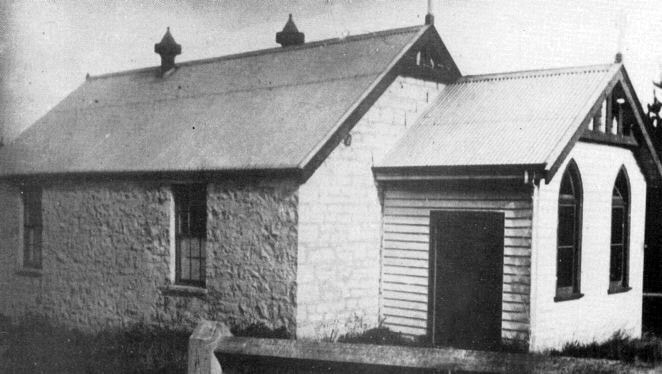
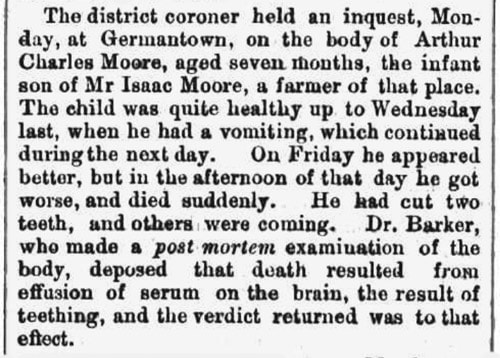
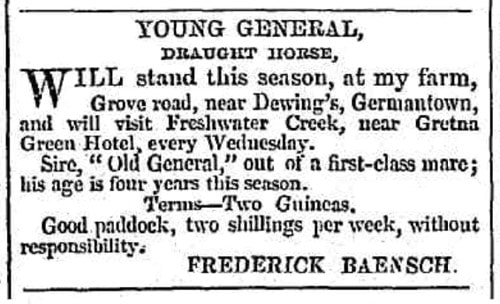
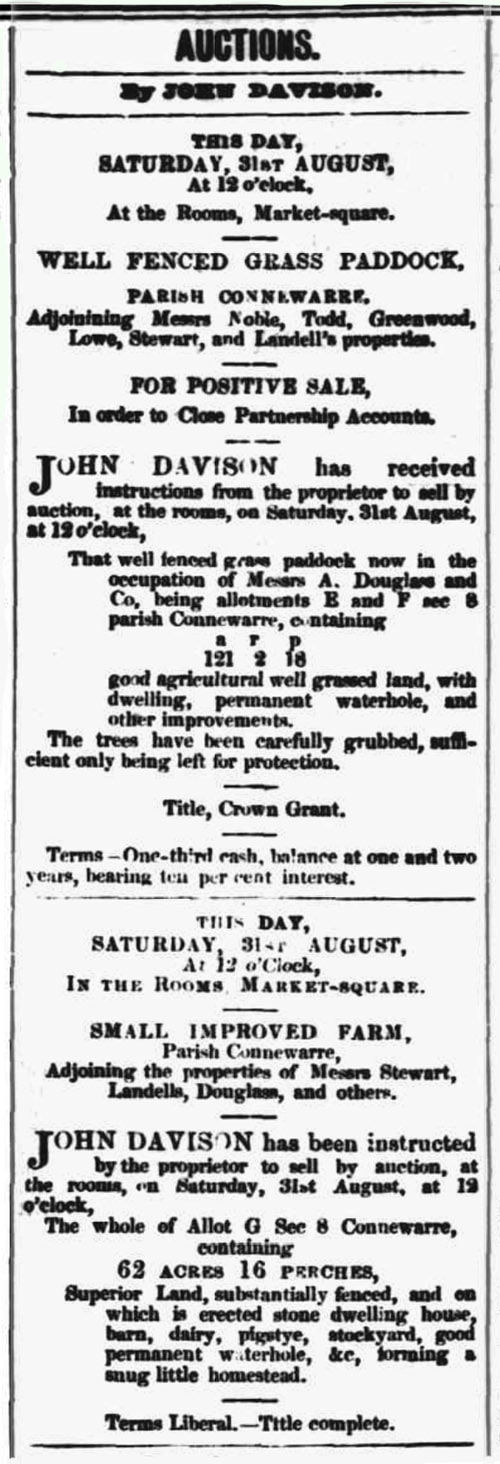
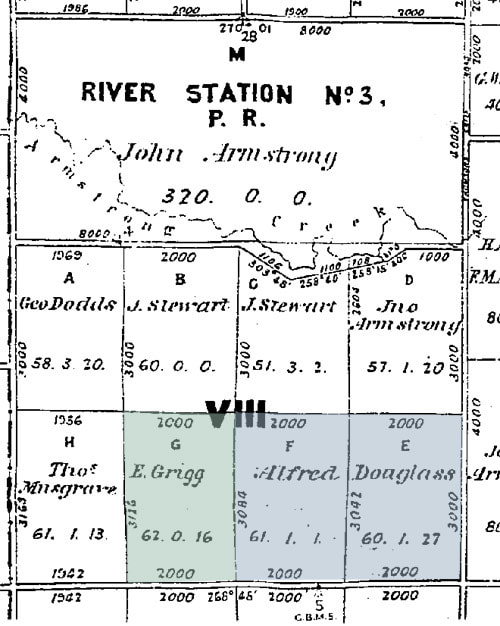
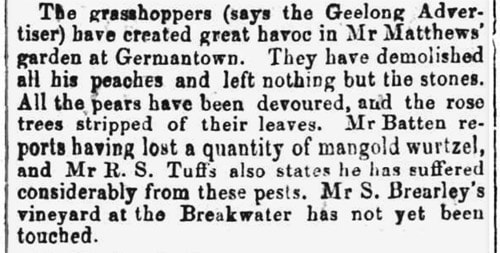
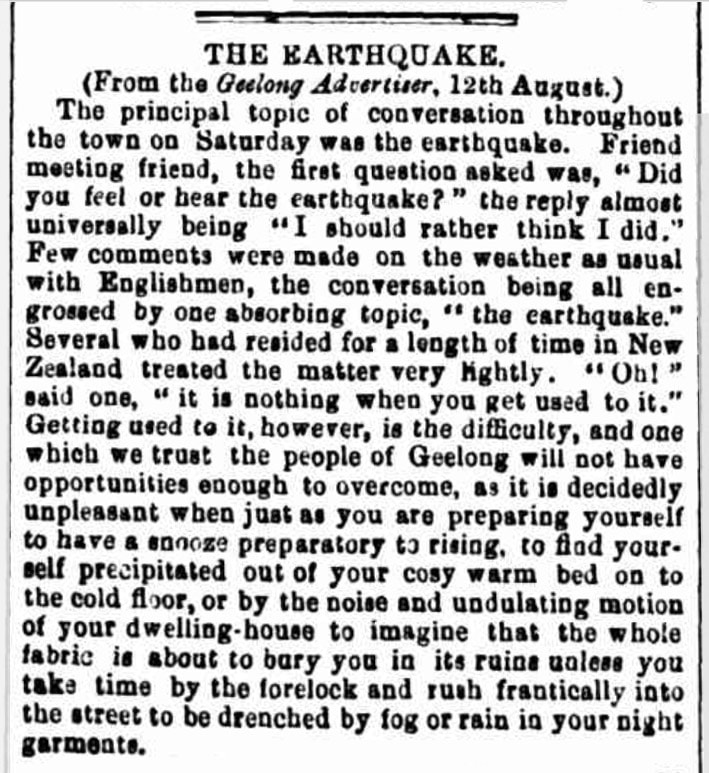
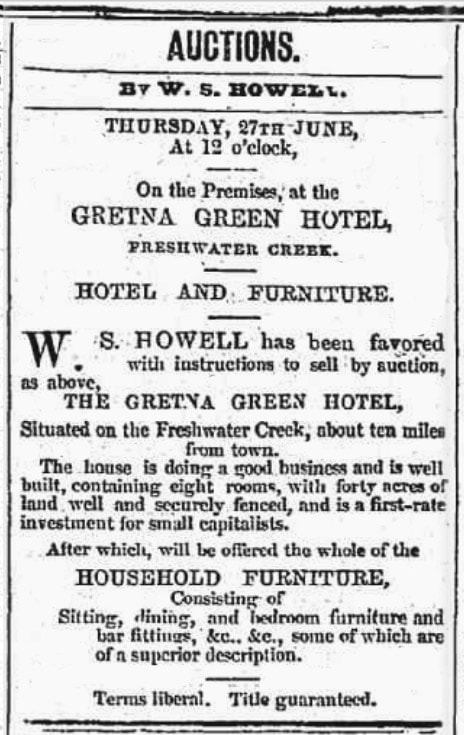
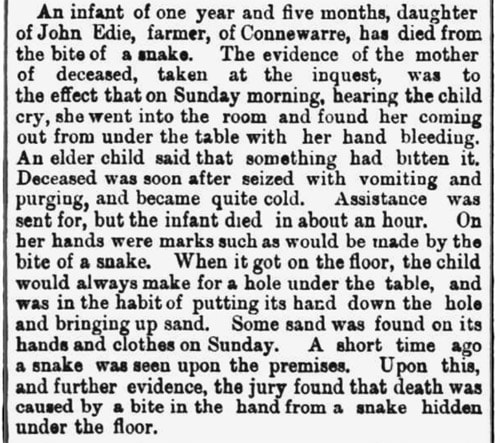
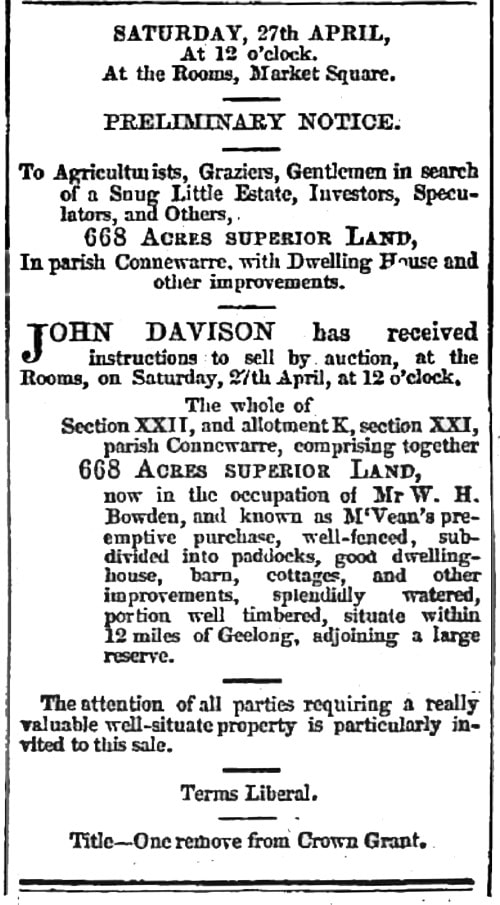
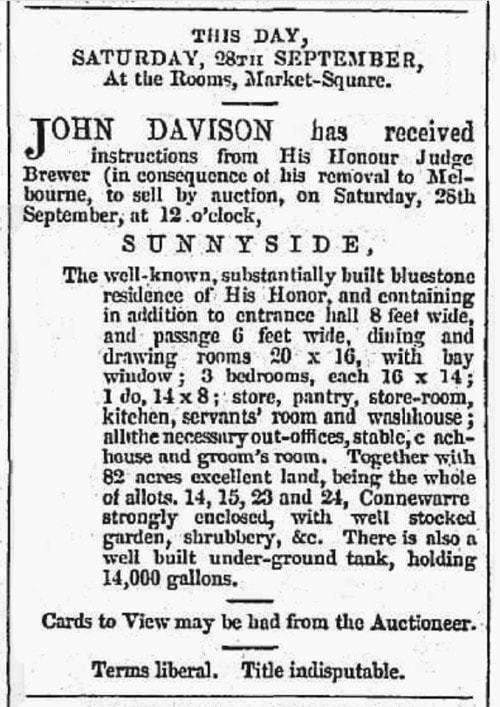
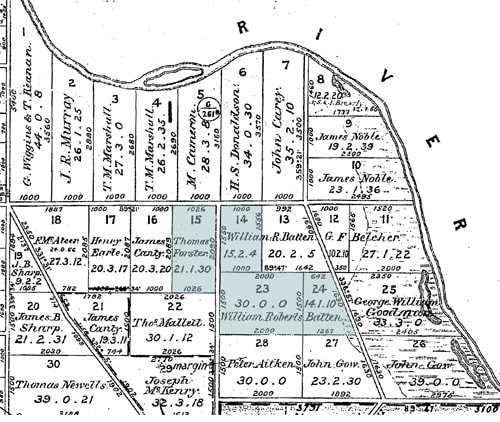
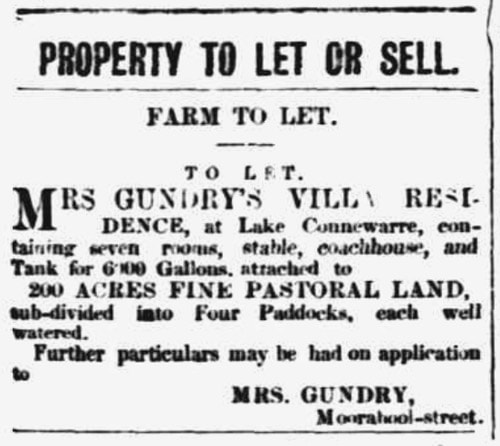
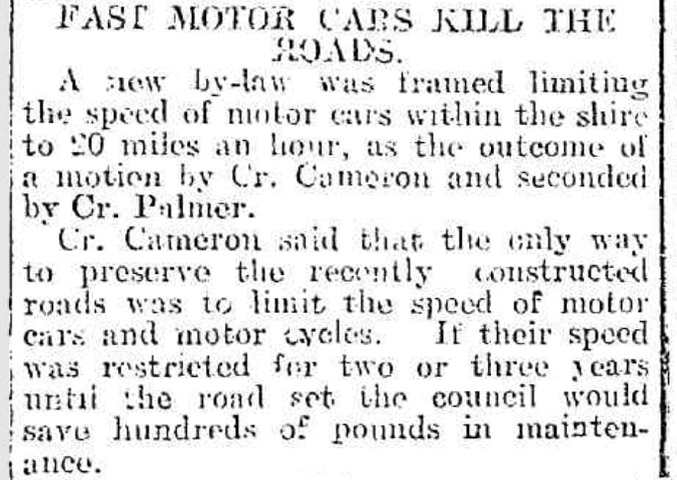
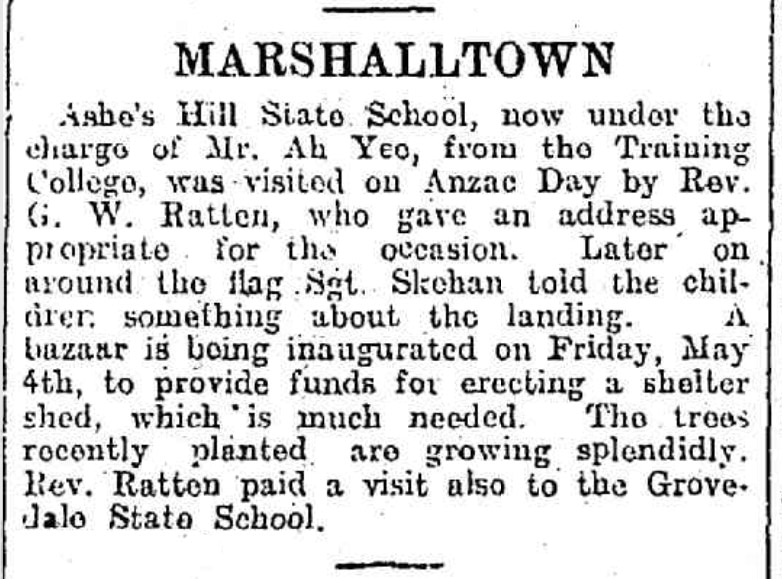
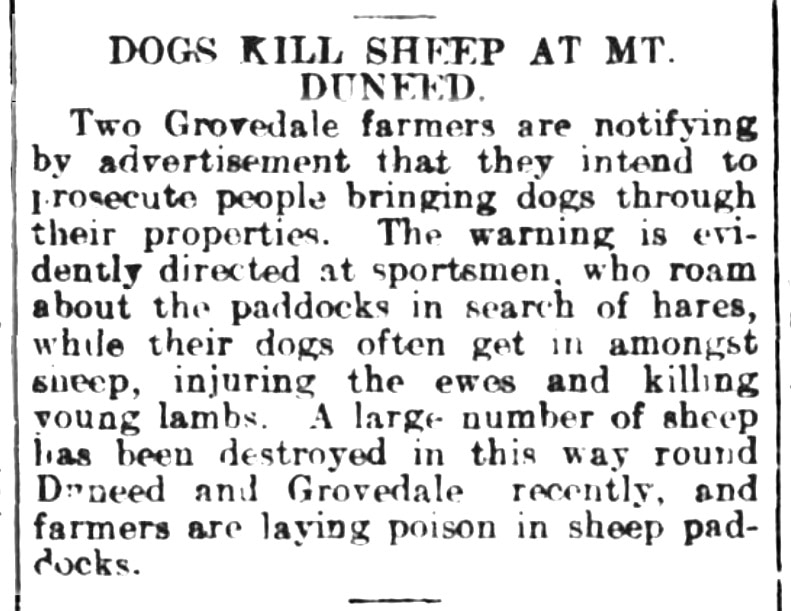
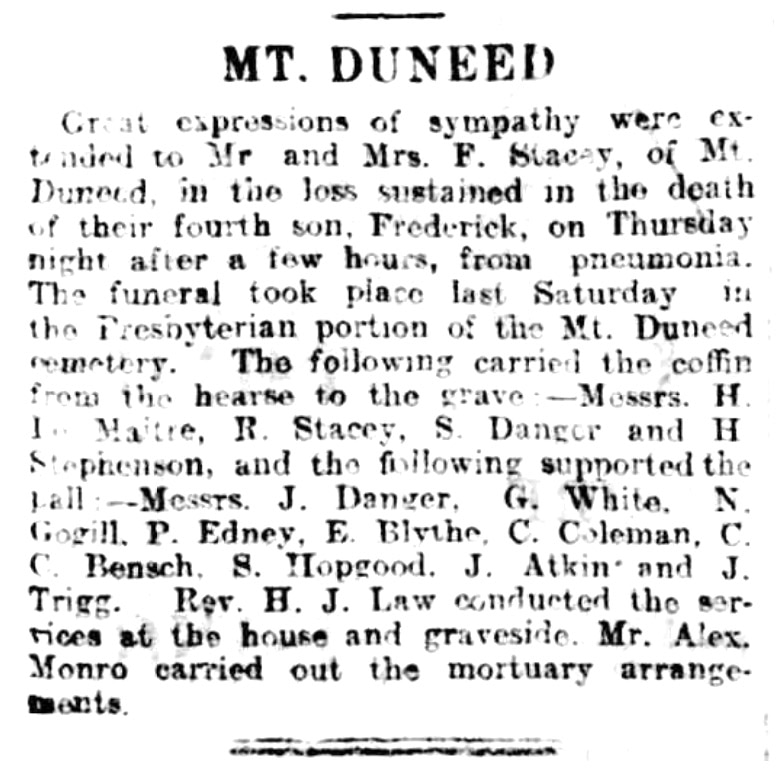
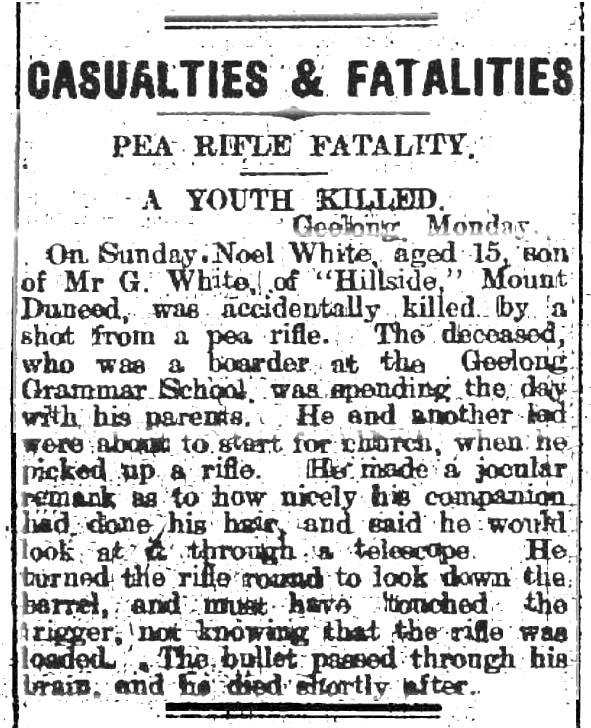
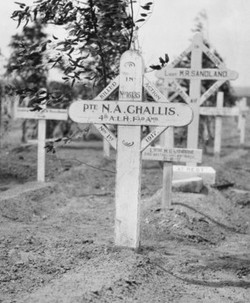
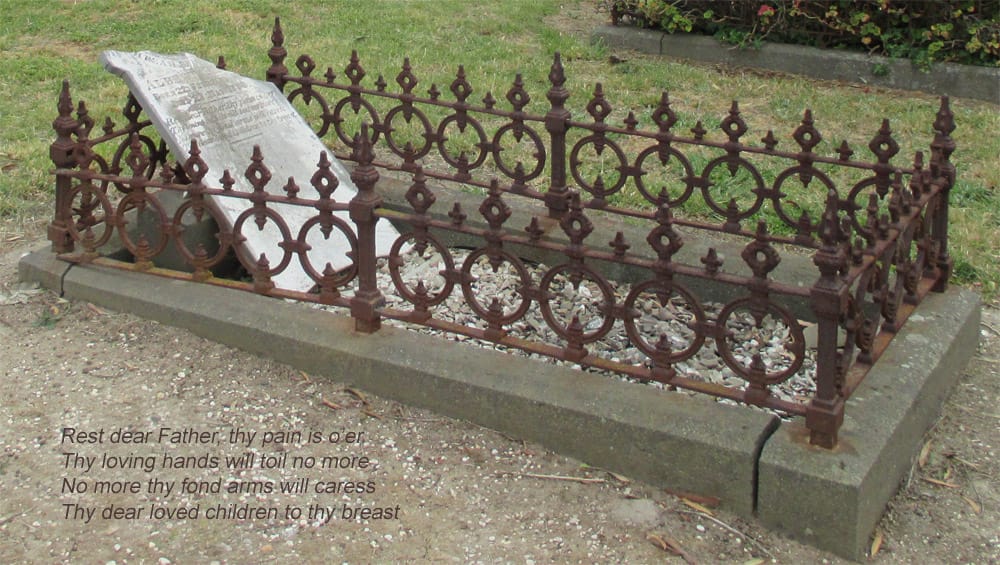
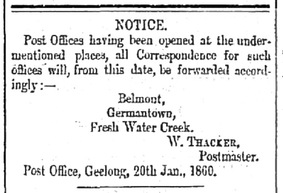
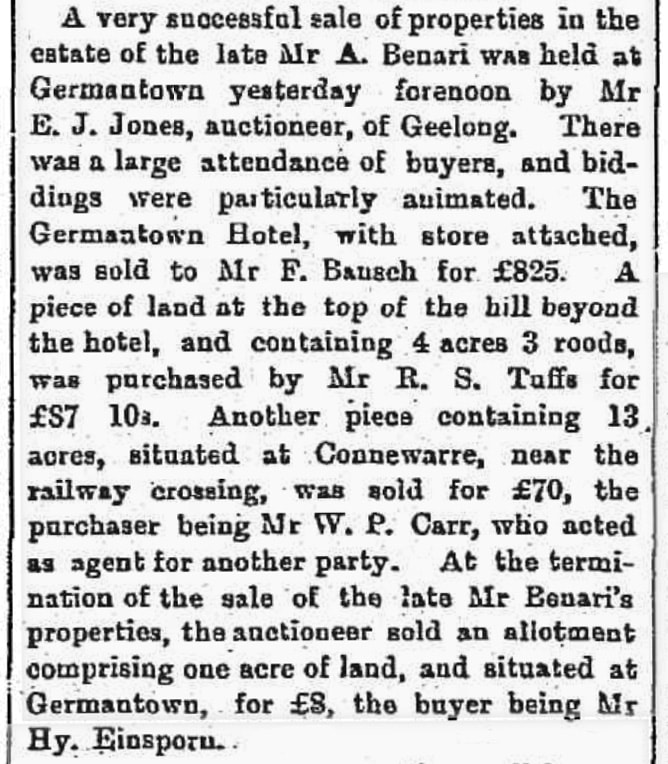
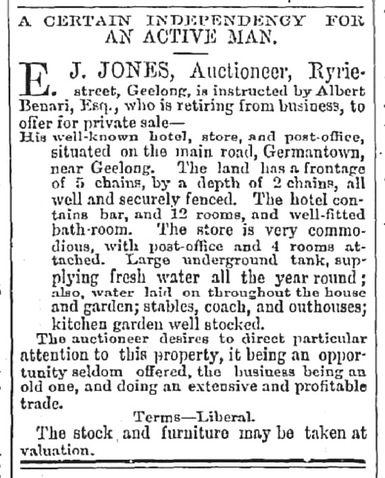
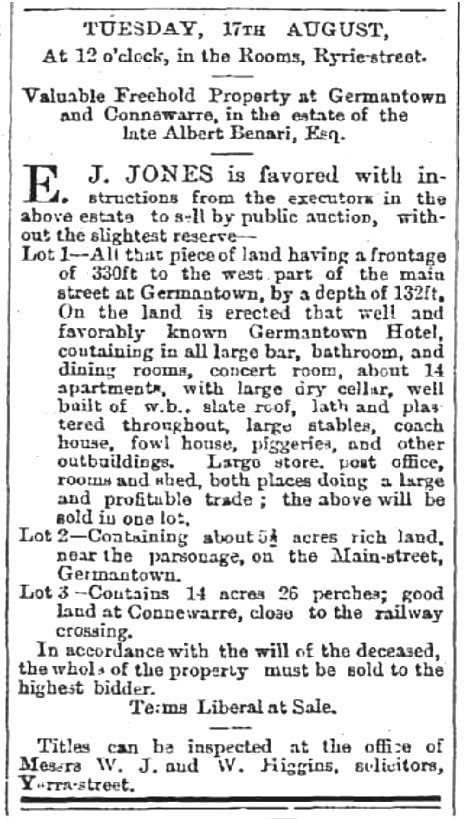
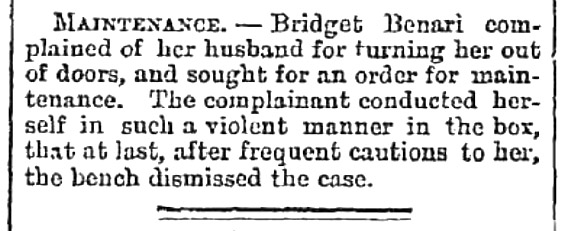
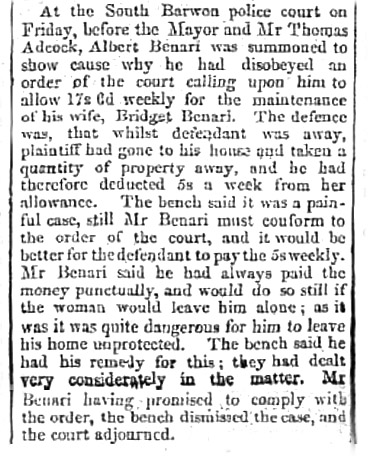
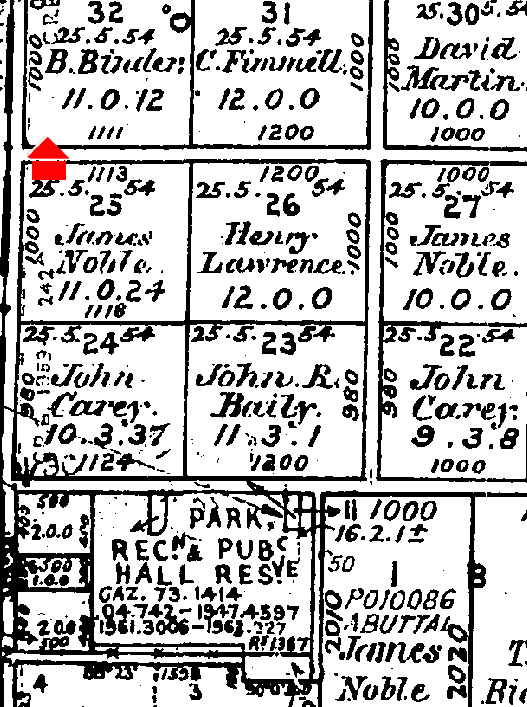
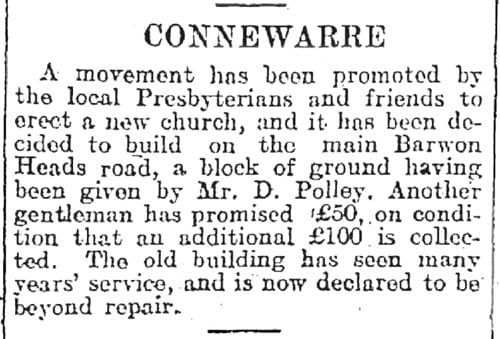
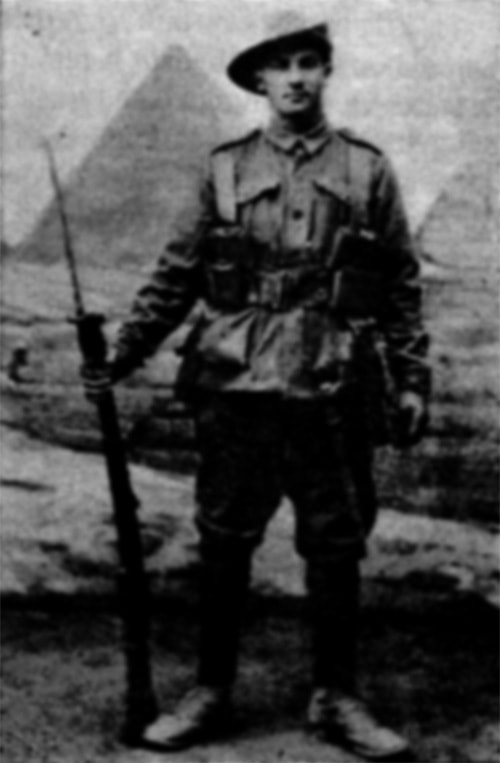
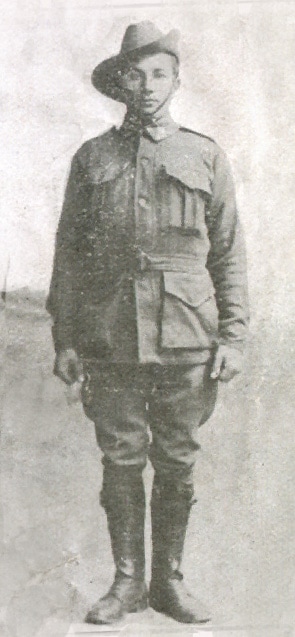
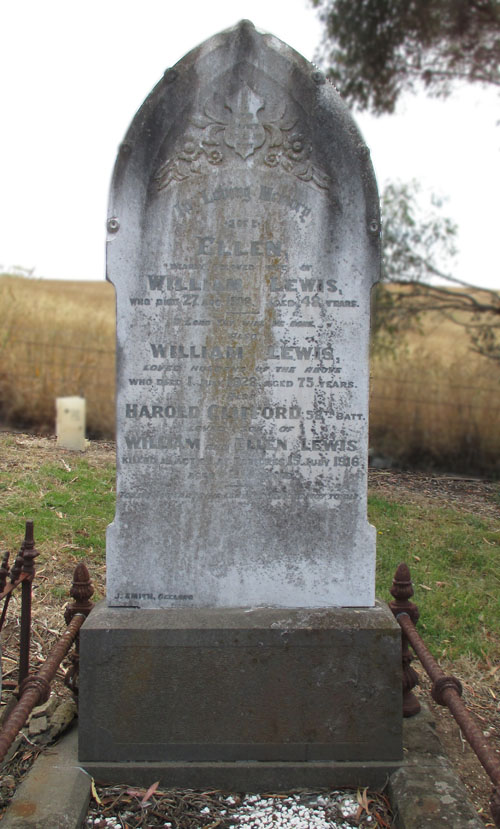
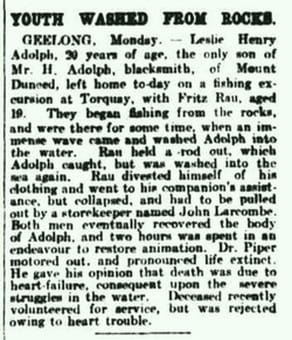
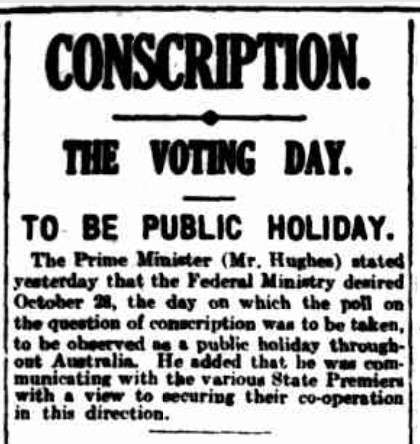
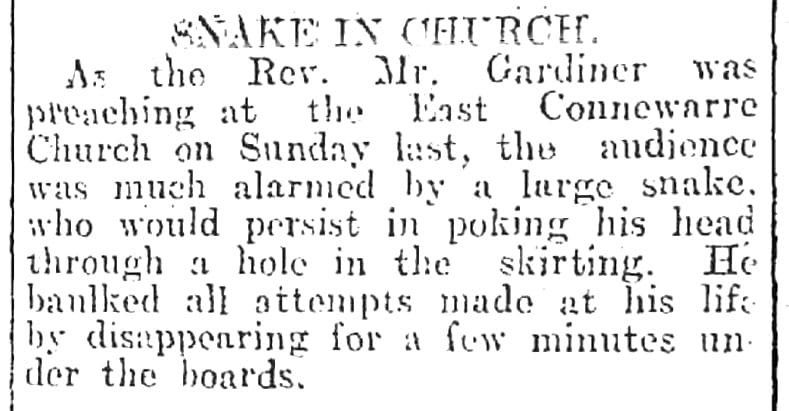

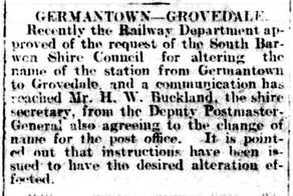

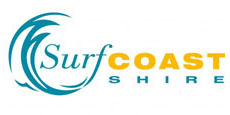
 RSS Feed
RSS Feed
